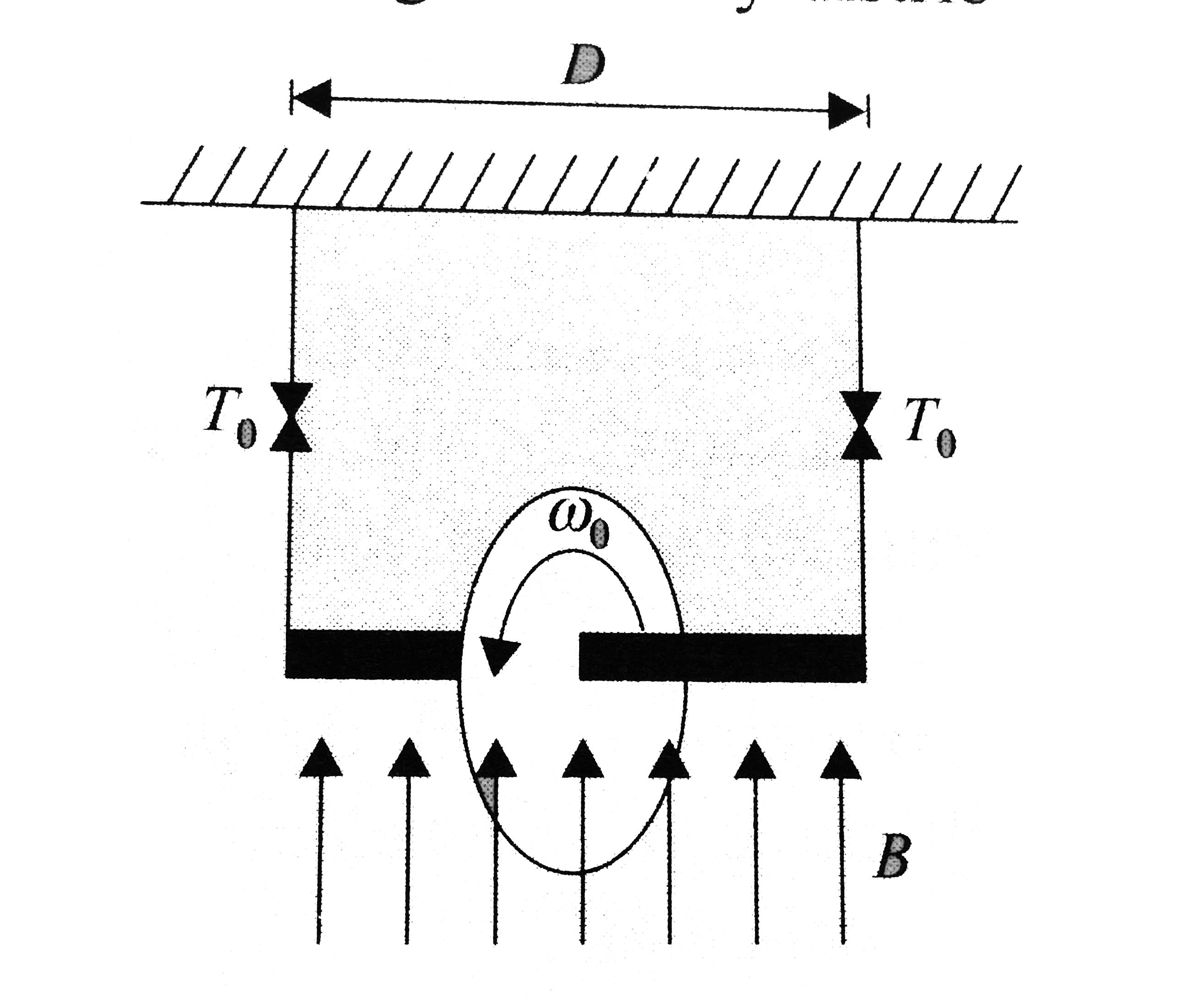The breaking tension of a string is 10 N. A particle of mass 0.1 kg tied to it is rotated along a horizontal circle of radius 0.5 meter. The maximum speed with which the particle can be rotated without breaking the string is
√5m/sec
√(50)m/sec
√(500)m/sec
√(1000)m/sec
The correct Answer is:B
To find the maximum speed with which a particle can be rotated without breaking the string, we can follow these steps:
Step 1: Understand the Forces Acting on the Particle
The particle is undergoing circular motion, which means there is a centripetal force acting towards the center of the circle. This centripetal force is provided by the tension in the string.
Step 2: Write the Equation for Centripetal Force
The centripetal force (Fc) required to keep the particle moving in a circle is given by the formula:
Fc=mv2r
where:
- m = mass of the particle (0.1 kg)
- v = speed of the particle
- r = radius of the circle (0.5 m)
Step 3: Set the Centripetal Force Equal to the Tension
Since the maximum tension in the string is equal to the centripetal force required to keep the particle moving in a circle, we can write:
T=mv2r
where T is the breaking tension of the string (10 N).
Step 4: Rearrange the Equation to Solve for v2
Rearranging the equation gives us:
v2=Trm
Step 5: Substitute the Known Values
Now, substitute the known values into the equation:
- T=10N
- r=0.5m
- m=0.1kg
So,
v2=10×0.50.1
Step 6: Calculate v2
Calculating the right-hand side:
v2=50.1=50
Step 7: Take the Square Root to Find v
Now, take the square root to find the maximum speed v:
v=√50≈7.07m/s
Final Answer
The maximum speed with which the particle can be rotated without breaking the string is approximately 7.07m/s.
---
The particle is undergoing circular motion, which means there is a centripetal force acting towards the center of the circle. This centripetal force is provided by the tension in the string.
The centripetal force (Fc) required to keep the particle moving in a circle is given by the formula:
Fc=mv2r
where:
- m = mass of the particle (0.1 kg)
- v = speed of the particle
- r = radius of the circle (0.5 m)
Since the maximum tension in the string is equal to the centripetal force required to keep the particle moving in a circle, we can write:
T=mv2r
where T is the breaking tension of the string (10 N).
Rearranging the equation gives us:
v2=Trm
Now, substitute the known values into the equation:
- T=10N
- r=0.5m
- m=0.1kg
v2=10×0.50.1
Calculating the right-hand side:
v2=50.1=50
Now, take the square root to find the maximum speed v:
v=√50≈7.07m/s
The maximum speed with which the particle can be rotated without breaking the string is approximately 7.07m/s.
Topper's Solved these Questions
Similar Questions
A particle of mass 100 g tied to a string is rotated along the circle of radius 0.5 m. The breaking tension of the string is 10 N. The maximum speed with which particle can be rotated without breaking the string is
View SolutionA particle is projected so as to just move along a vertical circle of radius r. The ratio of the tension in the string when the particle is at the lowest and highest point on the circle is infinite
View Solution
Knowledge Check
A stone of mass 5 kg is tied to a string of length 10 m is whirled round in a horizontal circle. What is the maximum speed with which the stone can be whirled around if the string can withstand a maximum tension of 200 N?
A10ms−1B15ms−1C20ms−1D25ms−1
A ring of radius R having unifromly distributed charge Q is mounted on a rod suspended by two identical strings. The tension in strings in equilibrium is T0. Now a vertical magnetic field is switched on and ring is rotated at constant angular velocity ω. Find the maximum ω with which the ring can be rotated if the strings can withstand a maximum tension of 3T0/2.

View SolutionA stone of of mass 0.25 kg tied to the end of a string is whirled round in a circle of radius 1.5 m with a speed of 40rev/min in a horizontal plane What is the tension in the string ? What is the maximum speed with which the stone can be whirled around If the string can withstand a maximum tension of 200 N ?
View SolutionA particle of mass m is tied to a string of length L and whirled into a horizontal plan. If tension in the string is T then the speed of the particle will be :
View SolutionA ball of mass 0.12 kg is being whirled in a horizontal circle at the end of a string 0.5 m long. It is capable of making 231 revolutions in one minute. Find the breaking tension of the string
View SolutionAn object is resting at the bottom of two strings which are inclined at an angle of 120∘ with each other. Each string can withstand a tension of 20 N. The maximum weight of the object that can be sustained without breaking the string is
View SolutionA string breaks under a load of 4.8kg A mass of 0.5 kg is attached to one end of a string 2 m long and is rotated in a horizontal circle . Calculate the greatest number of revolutions that the mass can make without breaking the string .
View SolutionA stone of mass 0.5 kg is attached to a string of length 2 m and is whirled in a horizontal circle. If the string can with stand a tension of 9N, the maximum velocity with which the stone can be whirled is:
View Solution
